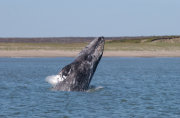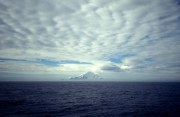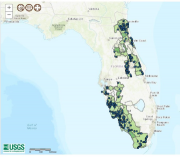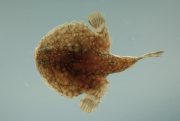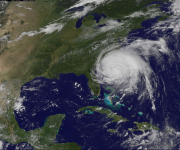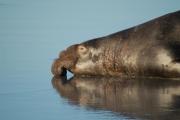Radio Program
Our regular Science and the SeaTM radio program presents marine science topics in an engaging two-minute story format. Our script writers gather ideas for the radio program from the University of Texas Marine Science Institute's researchers and from our very popular college class, Introduction to Oceanography, which we teach to hundreds of non-science majors at The University of Texas at Austin every year. Our radio programs are distributed at to commercial and public radio stations across the country.
For the eastern North Pacific gray whale, it’s been an up-and-down few decades. The population had been decimated by whaling. Conservation efforts allowed the whales to rebound. But over the past few years, the numbers have dropped again.
There are two populations of North Pacific gray whales. One is on the Asian side of the Pacific Ocean. The other is along the coast of the United States and Canada.
Every year, the whales migrate 10,000 miles or more. They go from their summer feeding grounds, in the Arctic, to the coast of Mexico, where calves are born.
People are always looking for ways to make things brighter and whiter—from teeth to laundry. They seldom think of brighter, whiter clouds. Yet whiter clouds are just as important as whiter bicuspids or T-shirts. They reflect more sunlight back into space, making our planet cooler.
In recent years, scientists have discovered a great cloud whitener: tiny organisms known as phytoplankton. They’re especially abundant in the Southern Ocean—the waters around Antarctica. Satellites reveal that clouds in that region are much whiter than those elsewhere.
When you bite into a chewy bagel, crunch a crispy taco, or grind up a piece of tough meat, you’re using structures that evolved hundreds of millions of years ago: teeth.
There’s no consensus on how teeth first formed. One idea says they formed from structures inside fish or perhaps other animals. The other says they formed from the scales of fish that resembled modern-day sharks—400 million years ago.
Hurricane Ian slammed into southwestern Florida in September 2022. It produced a storm surge up to 15 feet high, and dumped a foot or more of rain across the region. That killed dozens, damaged or destroyed thousands of buildings, and caused tens of billions of dollars in losses.
The final battle of a war between Rome and Carthage sent many warships to their doom. Scientists have pulled up artifacts from some of those vessels. And at least one of the artifacts became a busy home for life. Biologists found evidence of more than a hundred species—clams, worms, snails, and others—a record of how life colonized the artifact over the centuries.
There are lots of ways for a fish to attract its prey. The batfish uses two ways. It dangles a lure over its head, which pulls the prey in close. It then squirts a fluid into the water that completes the job—it pulls the prey close enough for the batfish to grab it.
Batfish—also known as seabats—are odd little creatures. They have wide, flat bodies. Seen from above, they can resemble garden spades or pancakes. They’re fairly small, and they live on the bottom of warm oceans and seas around the world.
As if hurricanes aren’t scary enough, they can generate something that sounds just as scary: stormquakes. As a hurricane rumbles across the ocean surface, it can cause the ocean floor to rumble as well. Fortunately, the quakes don’t cause any damage.
Scientists discovered stormquakes by studying seismic activity recorded during many hurricanes. The records revealed that sometimes, the ocean floor “jiggled” as a hurricane passed overhead. The jiggles could be as strong as a magnitude 3.5 earthquake. Some continued for days, and were felt up to thousands of miles away.
Whale sharks are a bit like pop stars: They attract a crowd. Smaller fish swarm around them. That’s probably a better deal for some fish than others. Sometimes, predators can wolf down entire schools of the groupies in a matter of seconds.
Whale sharks are the largest fish on Earth. They can span 25 feet or more. They’re filter feeders—they filter tiny fish and other small organisms from the water as they swim along with their mouths wide open.
When we talk about “falling asleep,” we don’t usually mean it literally. For Northern elephant seals, though, it is literal—they sleep while falling through the ocean. You can’t help but wonder if they dream about falling, too.
Northern elephant seals live along the coast of California. They can be up to 13 feet long, and weigh a couple of tons. The seals spend seven or eight months a year at sea, foraging for food. They spend the remaining months on shore, where they breed and rest up for the next year’s journey.
The bodies of most fish are scaly. The scales protect them from predators and rough surfaces, improve streamlining, and ward off diseases and parasites. But a few species have different forms of protection: tough skin, bony plates, or thick layers of slime.
Scales vary in size, shape, alignment, and structure. The bodies of most sharks, for example, are covered by rows of tiny, pointed scales that aim toward the tail. The scales of tarpon, on the other hand, are round and can be more than two inches across.

